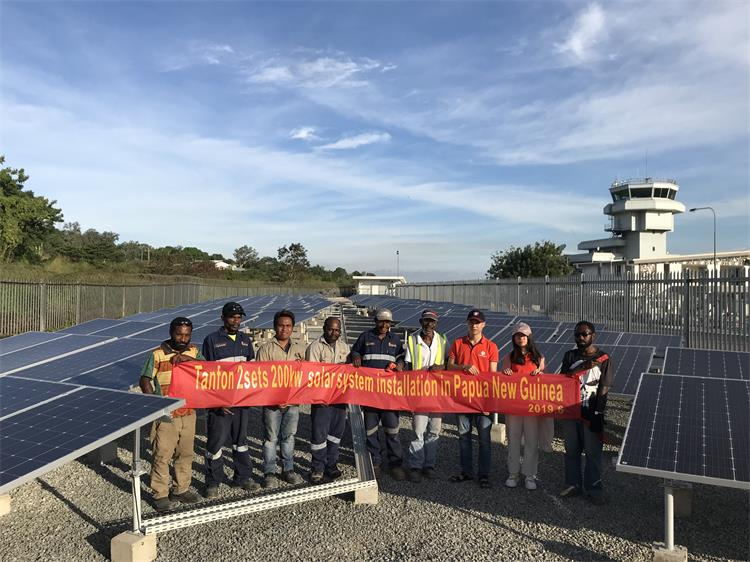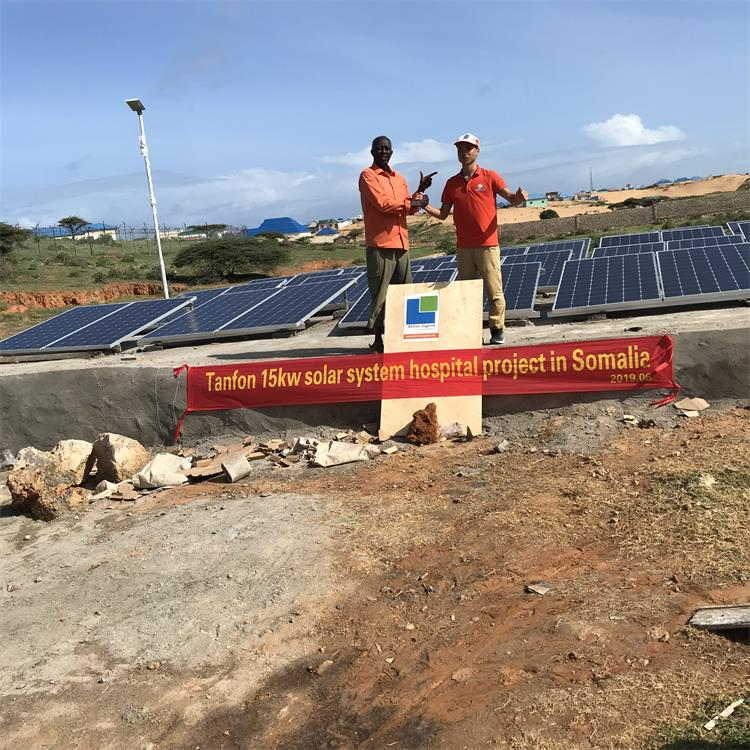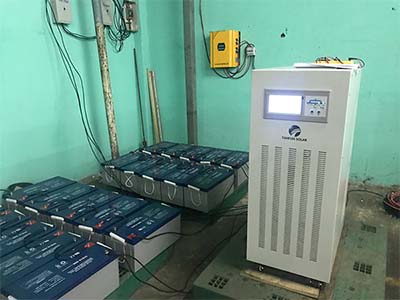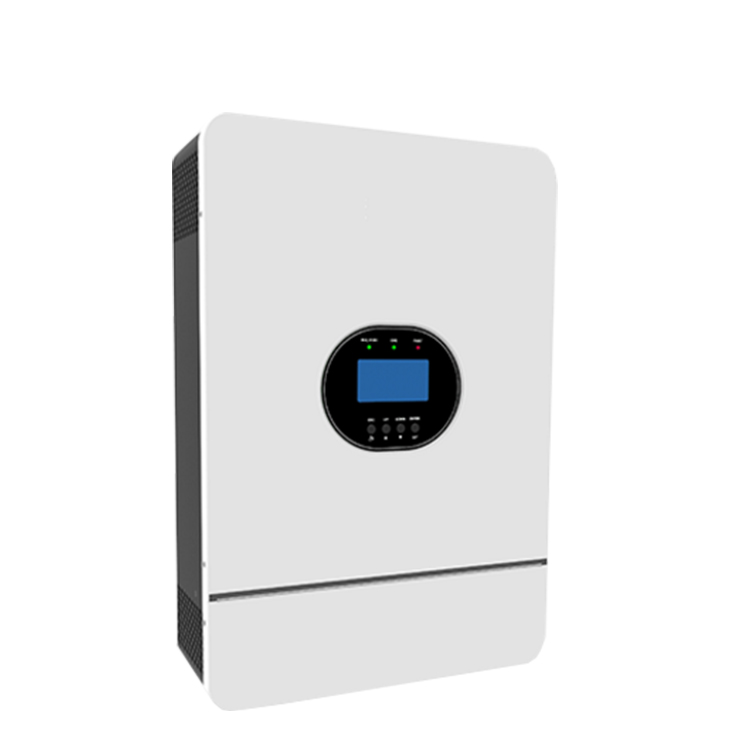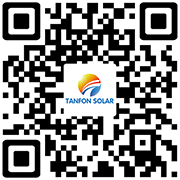 TANFON SOLAR
TANFON SOLAR
 August 01,2019
August 01,2019
In the process of photovoltaic power station construction, the selection of what type of high-power solar inverter power supply has become a very important link, expensive may not be right, suitable for their own is better.
With the development of the photovoltaic market, there are more and more PV companies, and different brands of products have different performances in actual power generation and experience.
How to choose a high-power inverter power supply suitable for your own power station, which should be considered?
1. Inverter type (group string/centralized type, 220V/380V/480V)
Selecting the inverter first depends on the specific application environment to select the basic type of inverter.
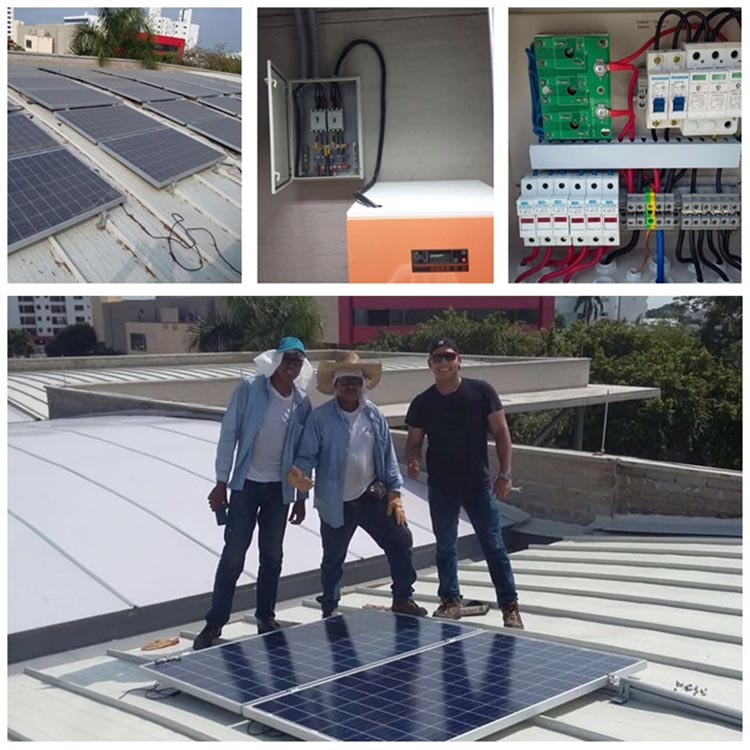
At present, there are three kinds of inverters in the market: centralized inverters, cluster inverters and micro inverters.
The centralized inverter is mainly used in large ground power stations, the voltage level is 315V, suitable for high voltage grid connection;
Cluster inverter, also known as distributed inverter, is mainly used in all kinds of barren mountains, industrial and commercial or household roofs. The scale of power station is generally not large.
The micro-inverter, the main application method is directly integrated on the battery board, suitable for small household power stations, and currently has few domestic applications.
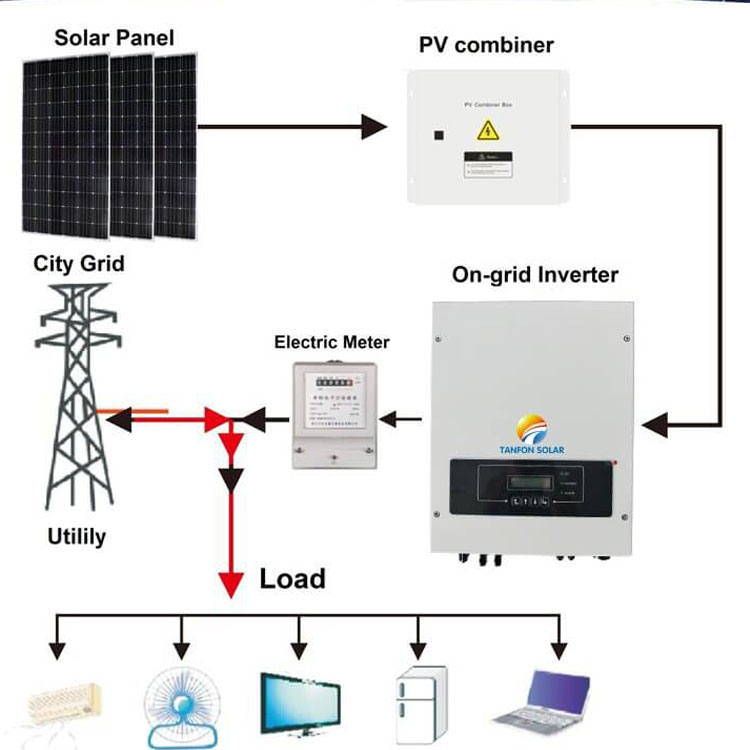
At present, most of the construction of distributed photovoltaic power stations USES series inverters.However, according to the specific needs of grid connection, there are three different voltage levels of the cluster inverter for you to choose.
First, the 220V output voltage grid-connected inverter is generally applied to the home photovoltaic power station.Most of these power stations are connected to the national grid in the form of self-generated surplus electricity.Secondly, the grid-connected inverter with output voltage of 380V is mainly used for building various industrial and commercial roof power stations and small centralized power stations with village as the unit in many places in China.Most of these plants are fully connected to the national grid.The latter is a 480V output voltage grid-connected inverter, which is mainly used in the 10KV medium-voltage grid-connected barren mountain and beach power stations.
2. General parameters: power, MPPT number of ways/number of input ways, efficiency, voltage range
After selecting the basic type of inverter, it is necessary to examine whether the basic parameters of the inverter meet their own requirements according to the project situation.
First, make sure that your photovoltaic power station is suitable for installing high-power inverters.
Generally, the installation capacity of power station is calculated according to the usable area of land or roof, and the inclination Angle and bracket installation mode should be taken into account when calculating, so as not to appear shadow blocking as far as possible.Sometimes the generating capacity of the power station is not in line with the power level of the inverter. For example, if 87 pieces of 265W components can be installed on a roof, the total capacity of the power station should be about 23.06kw, but there is no inverter with corresponding power in the market.In this case, we will first look at the superdistribution capacity of inverters with a power level lower than the power station capacity (we will focus on the sixth point), and then look for inverters with a higher level if the lower level does not meet the requirements.
Secondly, to investigate how many channels of MPPT inverter input.
The number of ways of inverter MPPT determines the power generation of a photovoltaic power station to a large extent, especially when the power station has problems such as shadow occlusion, different orientation of components, inconsistent performance of components, etc., and the longer the power station life (components decay), the more obvious the advantages of high power generation of MPPT will be.However, the number of input ways of inverter often determines whether a photovoltaic power station is easier to carry out panel design and more economical of auxiliary materials such as cables.
At last, the power generation capacity of inverter is investigated.
The power generation capacity of an inverter is a very comprehensive category, which is related to many aspects of the inverter, such as heat dissipation, component performance, failure rate, etc., but the more intuitive parameters are nothing more than efficiency and voltage range.
At present, the efficiency values marked in the inverter specification are mainly large efficiency and weighted efficiency.Among them, greater efficiency refers to the conversion efficiency of the inverter when all internal and external environments, including dc voltage, reach a better state. In other words, greater conversion efficiency is an instantaneous efficiency.And actual operation of the power inverter won't always work in the "efficiency" bigger load point, its point of input voltage and load changes over irradiance and temperature, to say the "bigger conversion efficiency" high inverter in real applications do not necessarily capacity is bigger, so many enterprises hype stunt of the "high efficiency" of the actual composition more.Weighted efficiency refers to the comprehensive efficiency based on the full consideration of the external illumination and the efficiency of each power point of the machine.
The weighted efficiency reflects the power generation capacity of the inverter in unit time vertically, and the voltage range mainly reflects the continuity of the power generation time of the inverter horizontally.
The lower the lower limit of the working voltage range of the inverter, the earlier the inverter will start and the later the inverter will shut down.However, the higher the upper limit of the working voltage range is, the stronger the bearing capacity of the inverter is during peak power generation, and the inverter is not easy to reduce or even shut down when the light is stronger, and the operation is more stable.
3、Security Question
As the core equipment of photovoltaic system, inverters are not only responsible for power generation tracking and direct ac conversion, but also for protecting power generation system and power grid.As the "CPU" of photovoltaic power generation system, the inverter must have the function of active detection and prevention. When the power grid fails or the components fail, the inverter will make judgment through current sensor and voltage sampling, and instruct the "actuator" contactor or circuit breaker to disconnect, so as to protect the safety of person, power grid and equipment.
Generally, the basic protection functions of grid-connected inverter are: input overvoltage undervoltage protection, input overcurrent protection, short-circuit protection, overheating protection, lightning protection; Grid-connected protection includes: output over-voltage protection, output over-current protection, over-frequency protection, under-frequency protection and anti-island-effect protection.
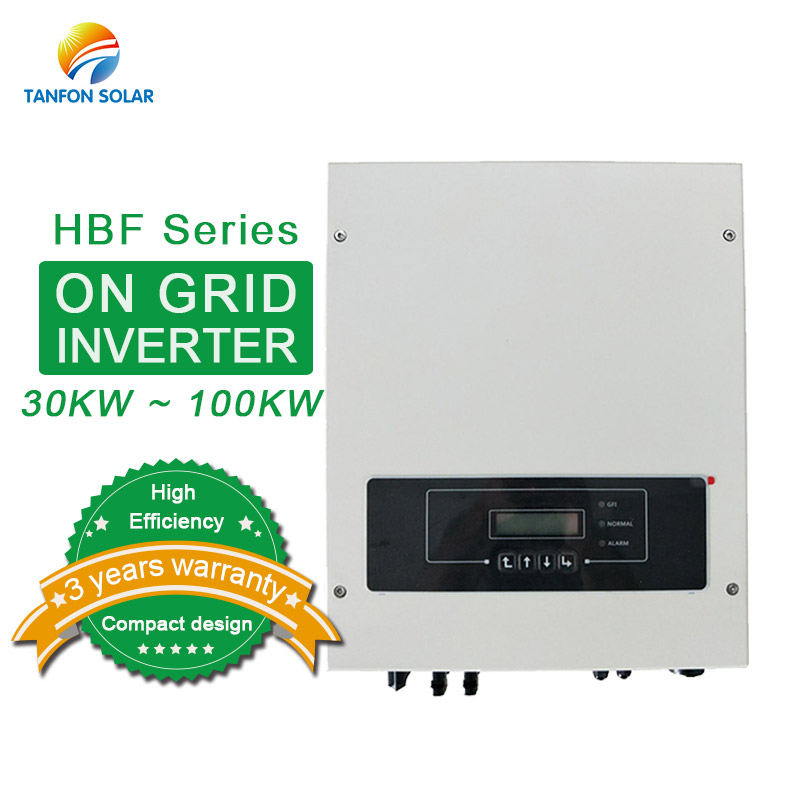
One of the more important aspects of photovoltaic grid connection is anti-island effect protection.When the grid loses power due to fault, if the system cannot detect the power loss of the grid in time and continues to send electricity to the grid, then the photovoltaic system becomes an independent power supply system, which is called island effect.There are generally two reasons for the formation of the island: first, after the operation of the power grid fault detection device, but the high-power inverter power supply did not detect the fault;Second, the natural environment causes the fault of the power network.Island phenomenon will affect the whole power grid equipment and user equipment, or even damage the equipment.
4. Thermal solution
High-power inverter power supply will generally adopt outdoor installation, will often face exposure to sunlight, high temperature, high humidity, salt fog and other climate conditions, plus their own work will also emit a lot of heat, so the inverter cooling solution is particularly important.The heat dissipation design of the inverter will comprehensively consider many factors such as heat dissipation effect, protection, installability, maintainability, and the economic cost.
At present, there are three common cooling modes in the industry: forced air cooling, natural cooling and water cooling, among which water cooling mode is mainly used in large centralized inverters with few applications.For air cooling and natural cooling, there is a lot of discussion in the industry at present, but in essence, there is no good or bad distinction between the two heat dissipation modes, only whether they are more suitable or not.
First of all, forced air cooling is a traditional way of heat dissipation. Fast heat dissipation is its main advantage, but its disadvantages are high fan failure rate, loud noise and power consumption in harsh environment.Second, natural cooling, low failure rate, low noise, high protection level is its main advantages, but its design and software control technology requirements are very high.
From the perspective of inverter, the single-phase inverter used in the home has a lower power level, less heat dissipation and is applied to the home, small editor is more inclined to recommend the forced air cooling scheme.For small and medium-sized three-phase inverters (5-20kw), because of their high heat dissipation requirements, the installation site is generally easier to maintain, so it is recommended to adopt the forced air cooling heat dissipation mode.However, for large group and series inverters over 50KW, if air cooling is selected, it will produce a large noise and a large power consumption. Therefore, it is recommended to adopt natural cooling mode when the control technology is more advanced.
5.Over-matching ability
Due to the attenuation of module power, dust shielding and line loss of photovoltaic system, as well as the differences of lighting conditions in different regions, in order to optimize the benefits of the system, experienced design engineers will match the total capacity of photovoltaic modules with a larger capacity than that of the inverter, which is called overmatching.Proper overallocation can improve the overall income of the power station system.
The over-matching capacity of inverters is generally related to the number of input channels of the machine and the large dc input power that can be undertaken. According to the introduction of maoshuo inverter technical staff, the design of regular brand inverters will reserve a part of the over-matching margin, which is generally about 1.1 times.
6. After-sales service capability
The latter problem is after - sales problem.The after-sales problem depends on the warranty period. Currently, 5 years warranty is generally adopted in domestic inverter industry, and 6 years or 8 years warranty is also required in some poverty alleviation projects.The second thing to pay attention to is the response speed of the inverter supplier's after-sales service. Whether the inverter can quickly restore power generation after the failure of the inverter is a big problem directly related to the power generation of the photovoltaic power station.
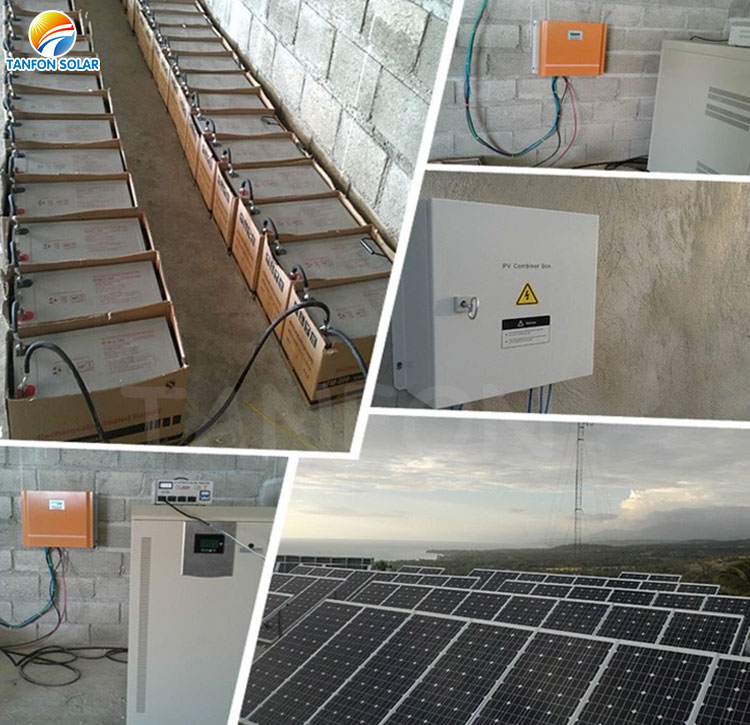
The latter question about the after-sales service ability is also a more important one. We should observe the operation status of the inverter supplier. If there is a risk in the operation of an enterprise, how can we talk about the after-sales service of the machine after five years?This situation has more than once appeared in China, is still in the warranty years of the machine to find manufacturers after sales, or found that manufacturers have gone out of business without trace can be found, or encountered manufacturers turn to machine warranty is not talked about.
summary
In the photovoltaic power station system, the cost of the inverter is less than 8%, but it is the determinant of the power generation efficiency. In the photovoltaic power station, when the components and other accessories are completely identical, the total power generation of the system varies by 5% to 10% when different inverters are selected.When the system is installed successfully, the inverter becomes the decisive factor.Therefore, the selection of inverter is of vital importance. The above six Suggestions on inverter selection hope to help more photovoltaic colleagues.

